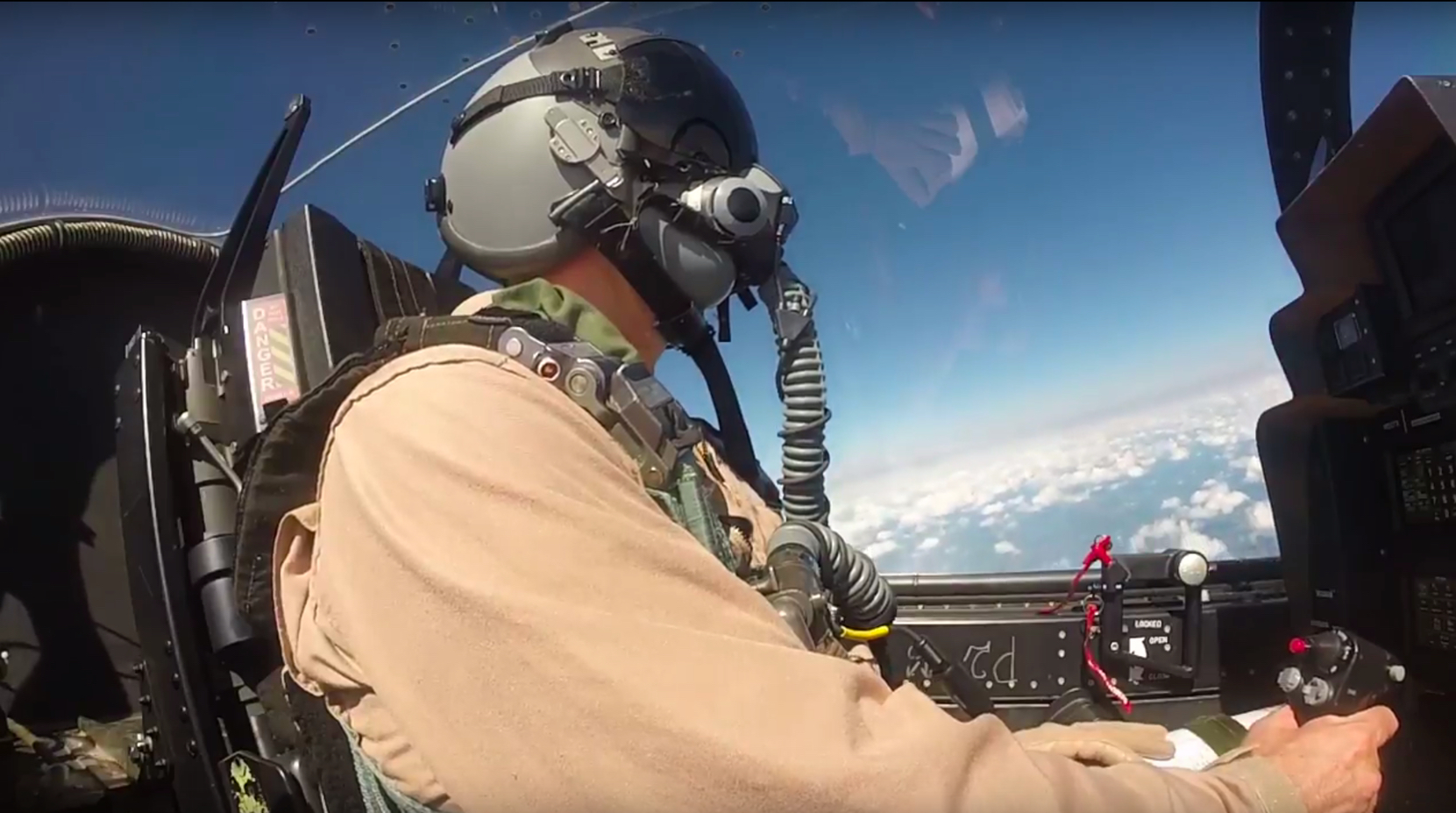
The Scorpion is the iPhone X of Military Aviation.
To many, the Textron Aviation Defense LLC Scorpion is an enigma.
Though it has capability overlap, the Scorpion is not a traditional Fighter, Attack, Reconnaissance, Observation, or Trainer, nor is it designed to replace any existing platform. To understand it, one must look to the Scorpion as a ISR/Strike platform developed in the context of the smartphone business model.
The hardware platform – the Scorpion, could be likened to the 256 GB iPhone X (or equivalent Pixel 2/Samsung Note 8 if you prefer). The aircraft features a truly open mission architecture, with extraordinary internal/external payload capability. An Interface Control Document [ICD] is made available to payload suppliers who program their payloads to interface with the Scorpion mission system. The result is a very efficient hardware platform with a “sky’s the limit” applications/payloads store!
Textron focuses on providing the very low operating cost, flexible, and modular “flying platform” to readily host today and tomorrow’s most capable payloads. The approach is a complete break from the proprietary systems utilized by the prime contractors of current high-end fighters; controlled, slowed and priced by the prime.
image: https://theaviationist.com/wp-content/uploads/2017/11/Scorpion-HMP-706x504.jpg
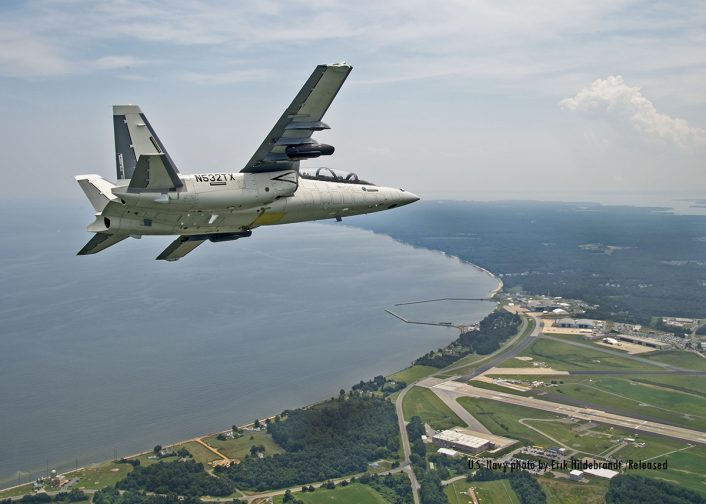
Textron Scorpion with HMP-400 gun pods overflies NAS Patuxent River during recent weapons trials. The TEXTRON team achieved 100% mission completion rate during weapons system testing. 5 different configurations (LAU-131, HMP-400 Gun pods, GBU-12) were tested over 5 days, with the tests concluding 4 days early. (Photo: Erik Hildebrandt)
I recently flew in one of the three production Scorpions, “P2” fresh off the USAF OA-X Experiment.
Textron Aviation Defense Flight Test and Demonstration Pilot Matt “Tajma” Hall (current Air National Guard C-130 Aircraft Commander; experienced pilot in the F-15E and T-6) provided flight briefing, and Chief Test Pilot Dan “Shaka” Hinson (Ret. USN F/A-18 Pilot, former Commanding Officer of the U.S. Naval Strike Fighter Weapons School, and Graduate of U.S. Naval Test Pilot School) piloted the aircraft. One cannot help but note the tremendous quality and experience in the team that Textron has assembled to not only fly and prove the aircraft, but to provide the intellectual capital behind design and capability.
image: https://theaviationist.com/wp-content/uploads/2017/11/Scorpion-RQ-706x504.jpg
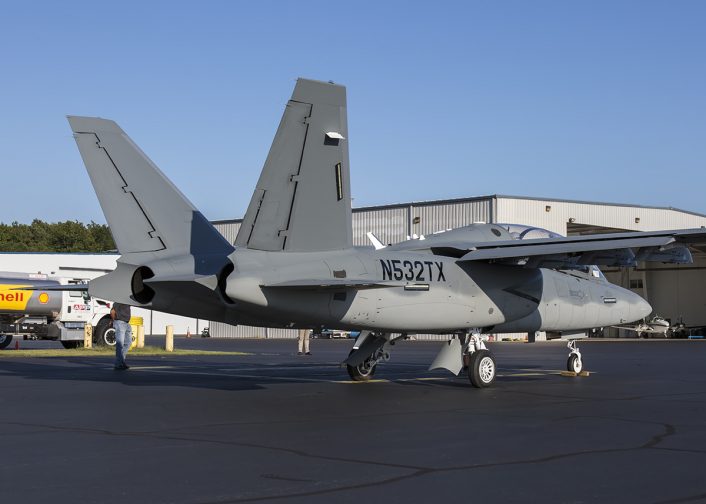
Testron Scorpion “P2” just off the USAF OA-X Experiment readies for flight from Manassas, VA. (All photos: Author unless otherwise stated).
Departing on an IFR flight plan in low overcast from the Manassas Regional Airport, Virginia, we quickly climbed to 5,000 ft and headed southwest where the skies were clearing. The rapid departure and climb made it clear we were under jet power. Within minutes we were in suitable VFR conditions over Charlottesville, Virginia and ATC provided a block of airspace for maneuvering. Over the next 60 minutes, Hinson demonstrated the flight characteristics, sensors and weapons systems.
Under his watchful eye, Hinson had me take control of the aircraft executing turns, pulling Gs, evaluating high speed handling, speed brake deployment, an aileron roll, multiple stalls and stall recoveries. The Scorpion is an incredibly stable and “pilot friendly” aircraft. Engines at idle, flaps up, stick back, and nose high – and the aircraft would not stall. When parameters were established to create a stall, recovery was straightforward. The aircraft is slippery and a slight drop in the nose leads to a “with this kind of nose attitude the aircraft really accelerates a lot…” from Hinson. The man is a real professional, a gentleman’s way of saying, “pull the nose up.” I did.
image: https://theaviationist.com/wp-content/uploads/2017/11/Scorpion-Selfie-706x504.jpg
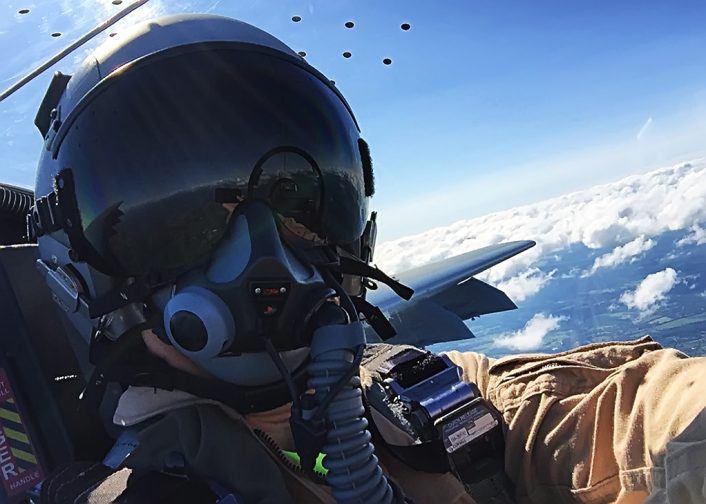
The author, Todd Miller taking a selfie in the Textron Aviation Defense Scorpion Jet over Virgina, USA. Capable, scalable ISR/Light Attack for the uncontested space.
The wing provides a tremendous glide ratio, ideal for the aircraft’s purpose – ISR in a permissive environment. On station at about 12,000 ft the total fuel burn was only 500 – 600 lbs per engine, per hour. This enables tremendous time on station with a variety of weapons at the ready to neutralize a target of opportunity. For comparison sake, the fuel burn per hour on station is about 10 – 12% of the F-15E Strike Eagle and less than 20% of an F-16 in the same role. While no replacement for these fighter aircraft, this mission utilization is precisely how scores of hours have been accumulated by the F-15E, F-16, A-10, and F/A-18s over the past 30 years. The Scorpion delivers exceptional economy while enabling operations from austere environments with significantly more capable ISR payloads.
A veritable set of airborne eyes and ears, the Scorpion supports payloads that facilitate both kinetic and non-kinetic effects across all operational domains. With tremendous internal space for payloads, the Scorpion offers an excess of electrical power to support anticipated and unforeseen demands. A nose bay is available for configuration with electro-optical/infrared (EO-IR) sensors such as the L3 Wescam MX series, or an active electronically scanned array radar (AESA). Three large internal payload bays can be configured for use with sensors/payloads to support Signals Intelligence (SIGINT), Synthetic Aperture Radar (SAR), Hyperspectral Analysis, Electronic Warfare or other. Additional payloads such as a 4G LTE Hotspot could be very helpful in a humanitarian crisis. Like a smartphone, the Scorpion’s capabilities are limited only by the ingenuity of providers to fill the space and power available.
image: https://theaviationist.com/wp-content/uploads/2017/11/Two-Wescams-706x504.jpg
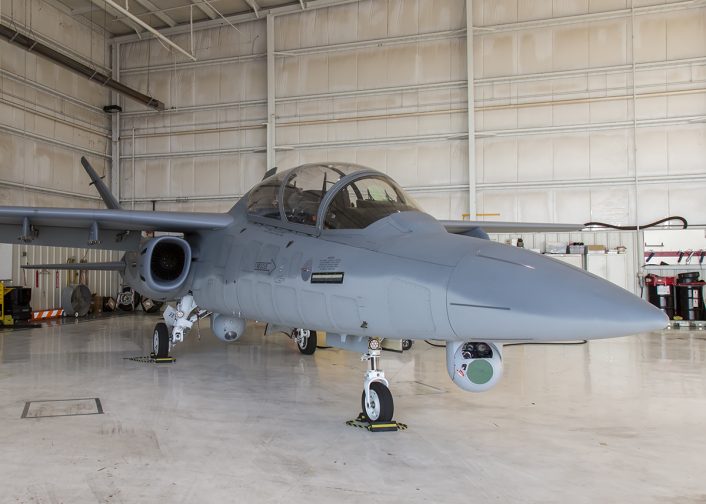
The Textron Scorpion demonstrates the ability to carry the L-3 Wescam MX-15 (nose bay) or the powerful MX-25 (payload bay 3). In both instances the EO IR sensor is fully retractable, and is stowed for flight operations until on station.
Permissive environments that utilize significant ISR assets such as the RC-135 Rivet Joint [SIGINT], E-8 JSTARS [Surveillance and Reconnaissance] and others may find more than adequate capability in a rightly configured Scorpion. Such downsizing of ISR packages would increase savings exponentially and free the most capable USAF assets for demanding mission sets.
Orbiting on station I found operating the sensor package while flying the aircraft via the Hands-on Throttle and Stick [HOTAS] intuitive and straightforward. Up front, Hinson utilized the Helmet Mounted Cueing System (HMCS) to demonstrate operational capabilities. Specific sensor packages overlay data from multiple payloads and create a single situational picture captured by time and geolocation. The data could be processed by a powerful computer package onboard, or streamed by secure network to other assets in space, the air or ground. As Textron Aviation Defense Senior Advisor Stephen Burke indicated, “We can pull out of the noise a target that is very difficult to see. A low contrast, short dwell target in a chaotic urban environment.” The kind of environment that the USAF has been operating in for years – with no end in sight.
Read more at https://theaviationist.com/2017/11/16/we-have-flown-in-textrons-scorpion-jet-heres-what-we-have-learned/#dRFcQVBzlwPUgY4Q.99